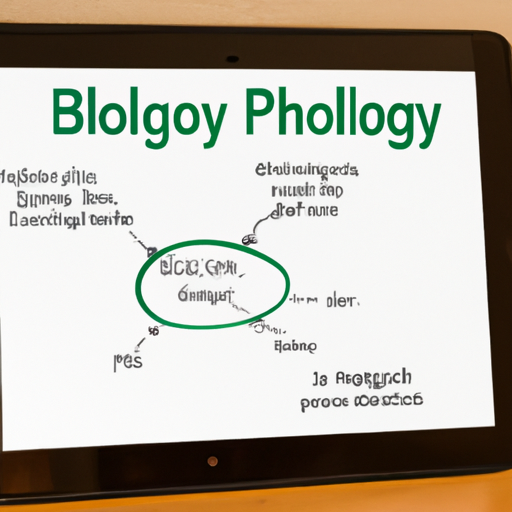
Integrating Technology into a Biology Lesson Plan for a Modern Classroom: Exploring the Boundless Possibilities
In today’s technologically driven world, it has become imperative for educators to adapt their teaching methods to incorporate digital tools. As a biology teacher, embracing technology in your lesson plans can enhance student engagement, foster collaboration, and provide students with a deeper understanding of the subject matter. In this article, we will delve into the numerous benefits and effective strategies for integrating technology into a biology lesson plan for a modern classroom environment.
1. Enhancing Engagement and Interactivity:
Technology brings a dynamic and interactive element to biology lessons, captivating students’ attention and promoting active learning. Interactive whiteboards and smart displays allow teachers to display visually appealing graphics, videos, and simulations, enabling students to visualize complex biological concepts effectively. Online platforms like Nearpod and Pear Deck allow teachers to create interactive presentations where students can actively participate through answering questions, polls, and quizzes.
2. Virtual Experiments and Simulations:
Laboratory activities are a fundamental component of biology lessons, but limited resources or constraints can sometimes hinder hands-on experiences. By incorporating virtual experiments and simulations, such as those offered by websites like PhET Interactive Simulations and BioInteractive, students can explore scientific concepts in a virtual setting. These virtual experiences provide a safe space for experimentation, allowing students to observe and analyze outcomes in real-time.
3. Collaborative Learning:
Technology facilitates collaborative learning by providing students with platforms for communication and team-based projects. Tools like Google Docs, Padlet, and Edmodo enable students to work together on assignments, share ideas, and give feedback to each other. Collaborative projects can range from researching and presenting a group project on various biological topics to creating digital portfolios to showcase their understanding of different biological concepts.
4. Digital Research:
With the wealth of information available online, technology has made it easier than ever for students to conduct research on biology-related topics. Encouraging students to navigate scientific databases, such as PubMed or Google Scholar, can help foster their research skills while exposing them to primary scientific literature. Teachers can guide students on how to critically evaluate online sources to ensure they are using reliable and valid information.
5. Gamification in Biology:
Incorporating elements of gamification into biology lessons can make learning more interactive and enjoyable. Online platforms like Kahoot!, Quizlet, and Gimkit allow teachers to create biology-themed quizzes and games that foster friendly competition among students. These gamified approaches not only reinforce subject knowledge but also create a positive and engaging classroom atmosphere.
6. Multimedia Presentations:
Encouraging students to create multimedia presentations, such as videos or podcasts, can be an excellent way for them to express their understanding of biological concepts. Tools like Adobe Spark, Flipgrid, or Audacity allow students to create visually appealing and engaging content that can be shared with their peers, promoting communication and collaboration.
7. Blended Learning:
Blending traditional classroom instruction with online learning resources can create a more well-rounded and flexible learning experience. By utilizing learning management systems like Canvas or Google Classroom, teachers can assign online readings, videos, and quizzes, allowing students to access course material outside of regular class hours. This blended learning approach creates opportunities for differentiated instruction, where students can progress at their own pace.
To optimize the integration of technology into biology lessons, teachers should consider the following best practices:
– Choose technology tools that align with specific learning objectives and the age group of students.
– Provide clear guidelines and instructions on how to use the chosen technology tools effectively.
– Ensure that access to technology is equitable, considering students’ diverse backgrounds and resources.
– Regularly assess the effectiveness of technology integration to make necessary adjustments and improvements.
– Stay updated on emerging technologies and educational trends to continuously enhance teaching practices.
In conclusion, integrating technology into biology lesson plans has the potential to revolutionize the learning experience in modern classrooms. By leveraging technology tools, teachers can enhance student engagement, encourage collaboration, and deepen students’ understanding of biological concepts. Embracing these strategies will undoubtedly create a vibrant and meaningful educational journey for both teachers and students alike.


















